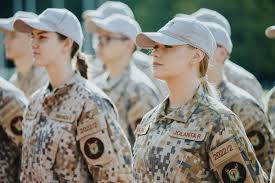Stamp: West Sichuan overprints (China, Peoples Republic - Southwest Lib. Area 1950)
West Sichuan overprints (China, Peoples Republic - Southwest Lib. Area 1950)
01 January (China, Peoples Republic - Southwest Lib. Area ) within release _SOUTH-WEST CHINA goes into circulation Stamp West Sichuan overprints face value 500 Chinese dollar
| Stamp West Sichuan overprints in catalogues | |
|---|---|
| Stanley Gibbons: | Sg: CN-SW 46a |
Stamp is square format.
500 on 100 4½ mm between linesAlso in the issue _SOUTH-WEST CHINA:
- Stamp - West Sichuan overprints face value 100;
- Stamp - West Sichuan overprints face value 200;
- Stamp - West Sichuan overprints face value 300;
- Stamp - West Sichuan overprints face value 500;
- Stamp - West Sichuan overprints face value 500;
- Stamp - West Sichuan overprints face value 800;
- Stamp - West Sichuan overprints face value 1,000;
- Stamp - West Sichuan overprints face value 2,000;
- Stamp - West Sichuan overprints face value 3,000;
Stamp West Sichuan overprints it reflects the thematic directions:
An army, ground force or land force is an armed force that fights primarily on land. In the broadest sense, it is the land-based military branch, service branch or armed service of a nation or country. It may also include aviation assets by possessing an army aviation component. Within a national military force, the word army may also mean a field army.
Famous People refers to the fame and public attention accorded by the mass media to individuals or groups or, occasionally, animals, but is usually applied to the persons or groups of people (celebrity couples, families, etc.) themselves who receive such a status of fame and attention. Celebrity status is often associated with wealth (commonly referred to as fame and fortune), while fame often provides opportunities to make money.
A flag is a piece of fabric (most often rectangular or quadrilateral) with a distinctive design that is used as a symbol, as a signaling device, or as decoration. The term flag is also used to refer to the graphic design employed, and flags have since evolved into a general tool for rudimentary signalling and identification, especially in environments where communication is similarly challenging (such as the maritime environment where semaphore is used). National flags are patriotic symbols with varied wide-ranging interpretations, often including strong military associations due to their original and ongoing military uses. Flags are also used in messaging, advertising, or for other decorative purposes. The study of flags is known as vexillology, from the Latin word vexillum, meaning flag or banner.
A general officer is an officer of high rank in the armies, and in some nations' air and space forces, marines or naval infantry
A head of state (or chief of state) is the public persona that officially represents the national unity and legitimacy of a sovereign state. In some countries, the head of state is a ceremonial figurehead with limited or no executive power, while in others, the head of state is also the head of government. In countries with parliamentary governments, the head of state is typically a ceremonial figurehead that does not actually guide day-to-day government activities and may not be empowered to exercise any kind of secular political authority (e.g., Queen Elizabeth II as Head of the Commonwealth). In countries where the head of state is also the head of government, the president serves as both a public figurehead and the actual highest ranking political leader who oversees the executive branch (e.g., the President of the United States).
A military, also known collectively as an armed forces, are a heavily armed, highly organized force primarily intended for warfare. Militaries are typically authorized and maintained by a sovereign state, with their members identifiable by a distinct military uniform. They may consist of one or more military branches such as an army, navy, air force, space force, marines, or coast guard. The main task of a military is usually defined as defence of their state and its interests against external armed threats.
A military, also known collectively as an armed forces, are a heavily armed, highly organized force primarily intended for warfare. Militaries are typically authorized and maintained by a sovereign state, with their members identifiable by a distinct military uniform. They may consist of one or more military branches such as an army, navy, air force, space force, marines, or coast guard. The main task of a military is usually defined as defence of their state and its interests against external armed threats. Вооруженные силы,






